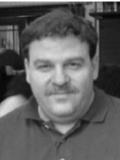
National Doctoral Programme in
Informational and Structural Biology

Department of Biosciences
Åbo Akademi University
Tykistökatu 6 FI-20520 Turku
Phone: +358-2-215-4014
Fax: +358-2-215-3280
Our research group focuses on understanding how proteins function, especially through their recognition of other molecules. In particular, we are studying cellular receptors, most of which have important roles in human health and in disease. Most, but not all of the receptors we are studying are attached to the cell membrane and have important roles in cellular signaling. Our research group applies a wide range of computational approaches to understanding protein structure and function. We use molecular modeling to obtain an estimate of a protein's structure in the short term, and try to solve the structure using x-ray crystallography in the long term. We collaborate closely with experimental research groups that have strong programs in molecular biology, cell biology, physical biochemistry. Thus, using computational approaches we interpret experiments in the light of the three-dimensional structure of the receptor protein. These interpretations lead to predictions about molecular interactions and suggest experiments that can help to verify the predictions or to suggest alterations in the model structure. By cycling between rounds of experimentation (mutagenesis, ligand binding studies, receptor activation studies, etc.) it is possible to very rapidly establish a functional model that is self-consistent and agrees with the experimental data. Such a model can be used to design new ligands with predictable binding properties that can be synthesized and tested.
To support our receptor function research, we continually develop computational tools to solve specific problems related to the receptors we are studying. During the past three years we have produced the Bodil modeling package the combines high quality graphics with basic bioinformatics tools: multiple alignments, structural comparisons, structure modeling, etc. Bodil was designed to help the user to effectively identify key features of a protein's structure and the roles of key features in the receptor's function. We are, in collaboration with mathematicians and several pharmaceutical companies, in the process of producing program modules within Bodil for ligand-receptor docking, ligand prediction and quantitative structure-activity relationships. This program will be available to academic groups early this year.